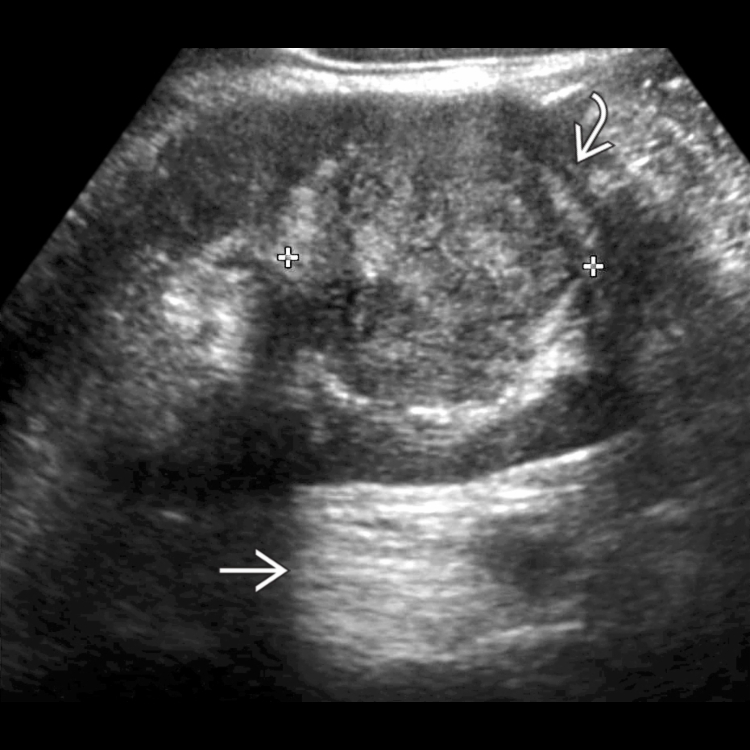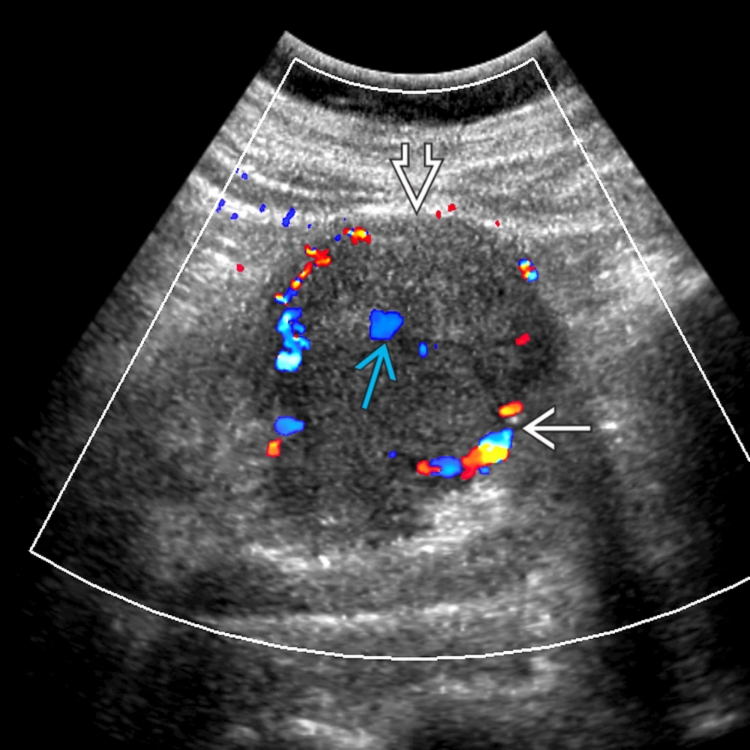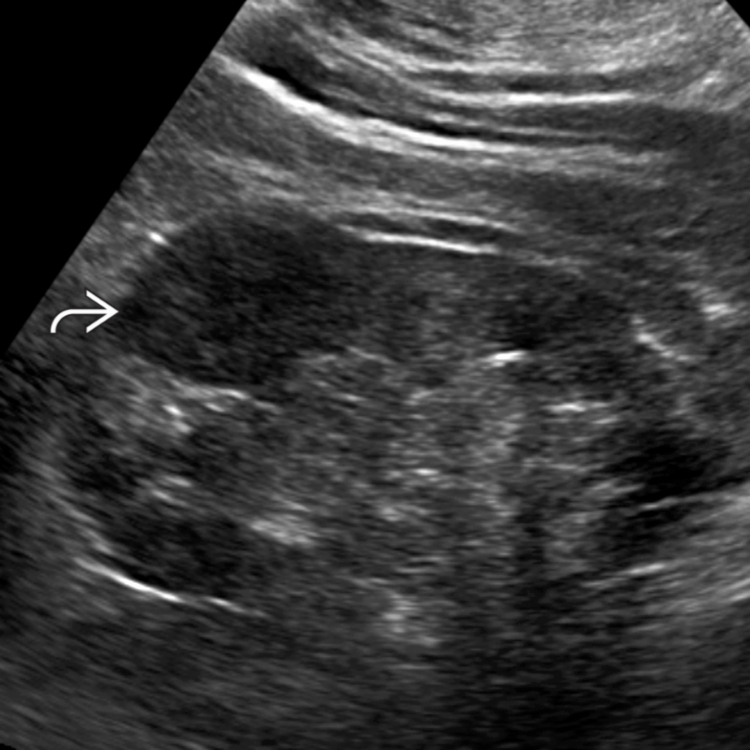KEY FACTS
Imaging
- •
Variable appearance: Solid, cystic, or complex
- •
Solid: Homogeneous or heterogeneous, hypervascular soft tissue components and areas of necrosis, calcifications
- •
Cystic variant: Unilocular or multilocular, fluid-debris levels (hemorrhage and necrosis), thick and irregular wall or septations, nodules
- •
Use Doppler for detection of internal vascularity
- •
RCC may be initially detected by US, but CECT and MR are primary tools for characterization and staging
- •
US may be useful in characterizing complex cystic lesions, indeterminate or equivocal on CECT or MR
- •
Contrast-enhanced US: Option for detection of perfusion analogous to enhancement on CT/MR
Top Differential Diagnoses
- •
Renal angiomyolipoma
- •
Transitional cell carcinoma (urothelial carcinoma)
- •
Renal oncocytoma
- •
Renal metastases and lymphoma
- •
Column of Bertin
Pathology
- •
Most common primary renal malignancy; most sporadic but can be hereditary (~ 4%)
- •
Risk factors: Smoking, obesity, long-term dialysis
- •
Variants: Clear cell, papillary, medullary RCC
Clinical Issues
- •
50-70 years of age
- •
M:F = 2:1; slightly higher in African Americans
- •
Gross hematuria (60%), flank pain (40%), palpable flank mass (30-40%); classic triad (< 10%)
- •
Fever, anorexia, weight loss, malaise, nausea, vomiting
- •
Most tumors now detected incidentally and are smaller
Scanning Tips
- •
Look for unequivocal blood flow in renal lesions, particularly in components of complex cystic lesions
 . The renal vein
. The renal vein  is expanded with tumor thrombus, which extends into the inferior vena cava
is expanded with tumor thrombus, which extends into the inferior vena cava  . A 2nd tumor nodule is seen
. A 2nd tumor nodule is seen  .
.
 . Note posterior acoustic enhancement
. Note posterior acoustic enhancement  ; however, there was internal flow on color Doppler.
; however, there was internal flow on color Doppler.
 with infiltration and distortion of the renal sinus fat
with infiltration and distortion of the renal sinus fat  .
.
 with peripheral
with peripheral  and internal color flow
and internal color flow  .
.
 that was a clear cell renal carcinoma.
that was a clear cell renal carcinoma.
 in the partially exophytic hypoechoic mass
in the partially exophytic hypoechoic mass  .
.
Stay updated, free articles. Join our Telegram channel

Full access? Get Clinical Tree








